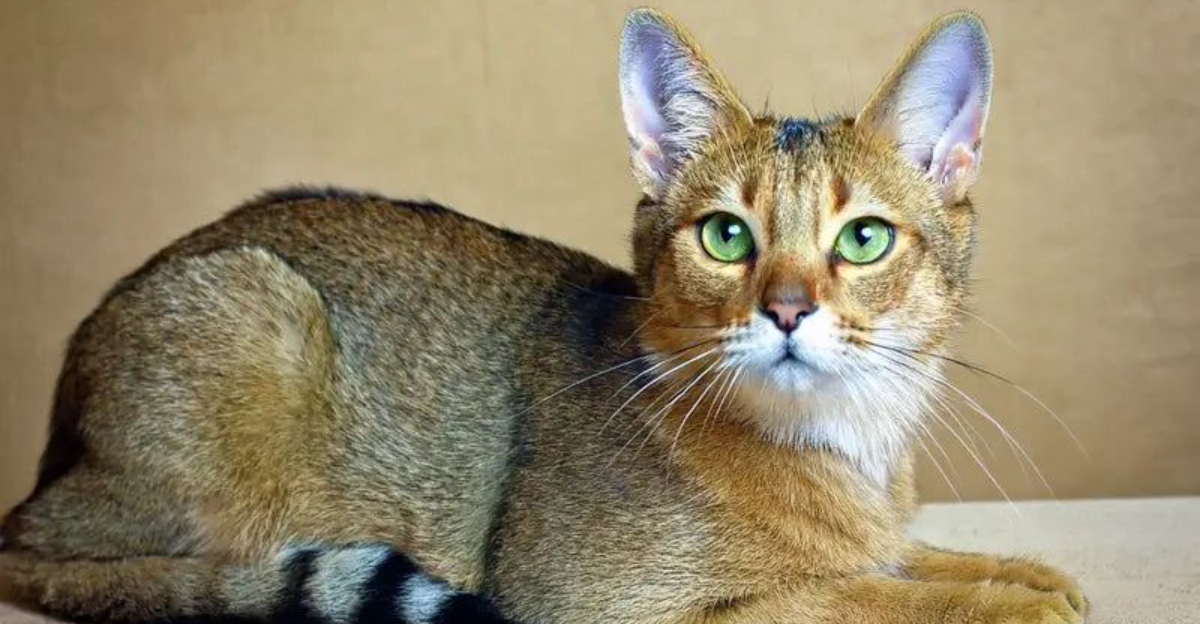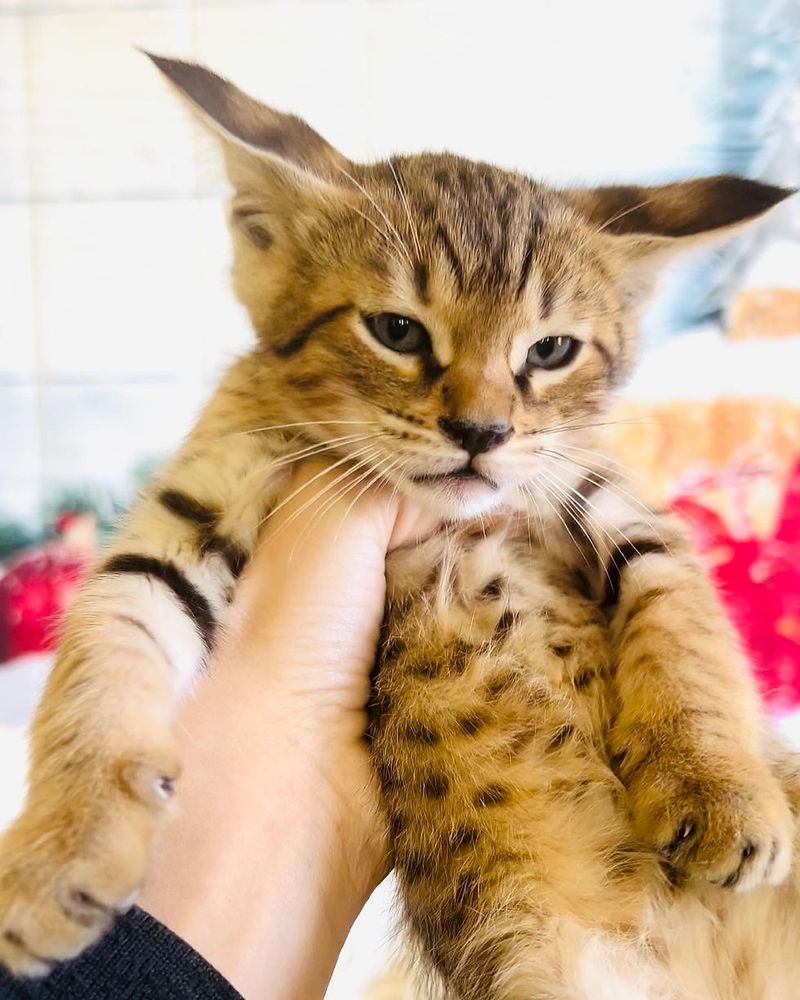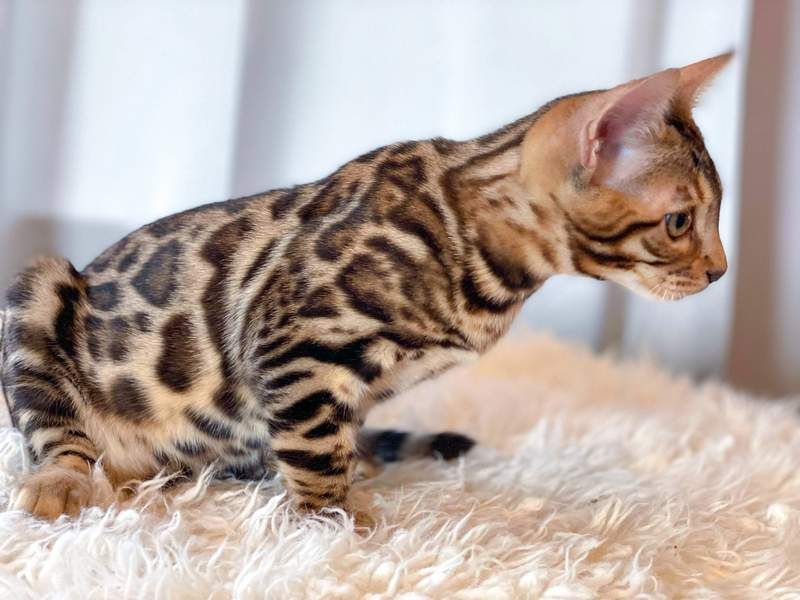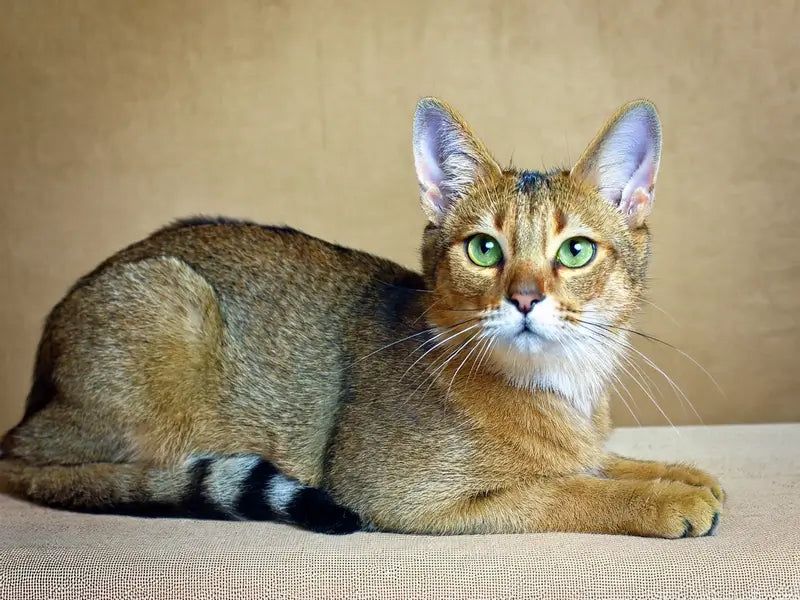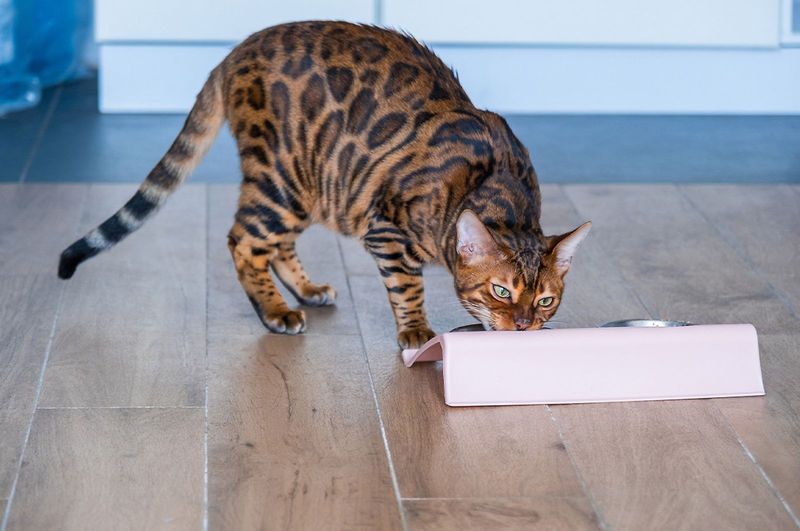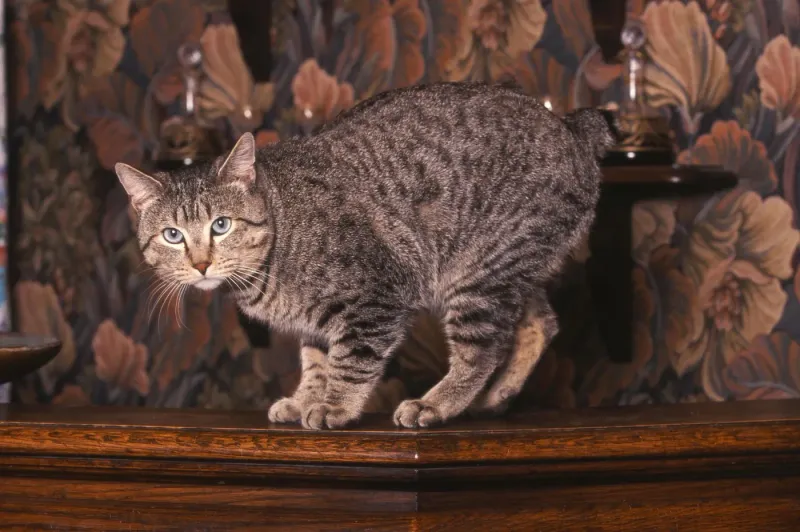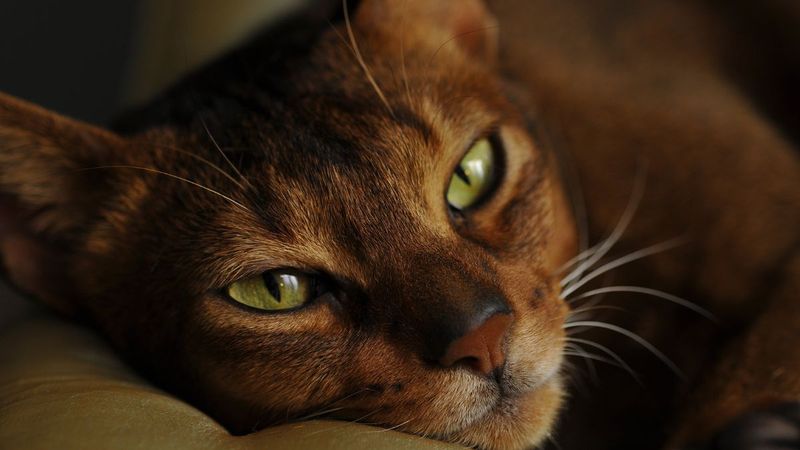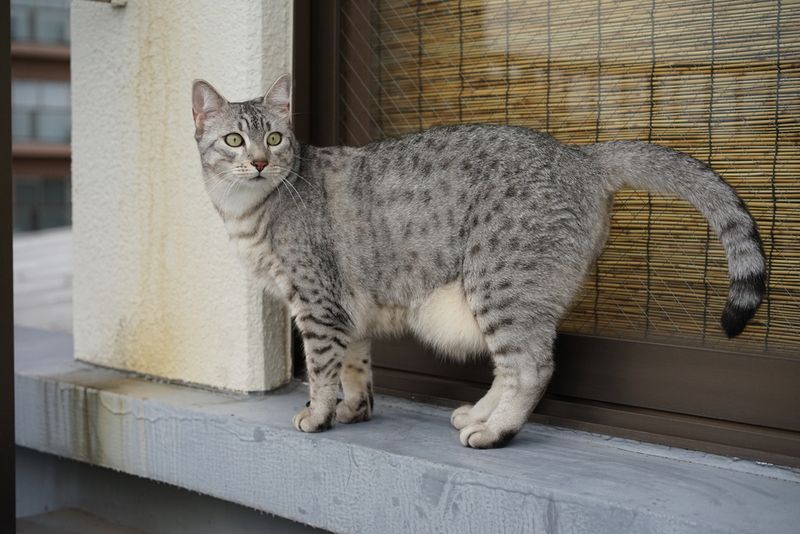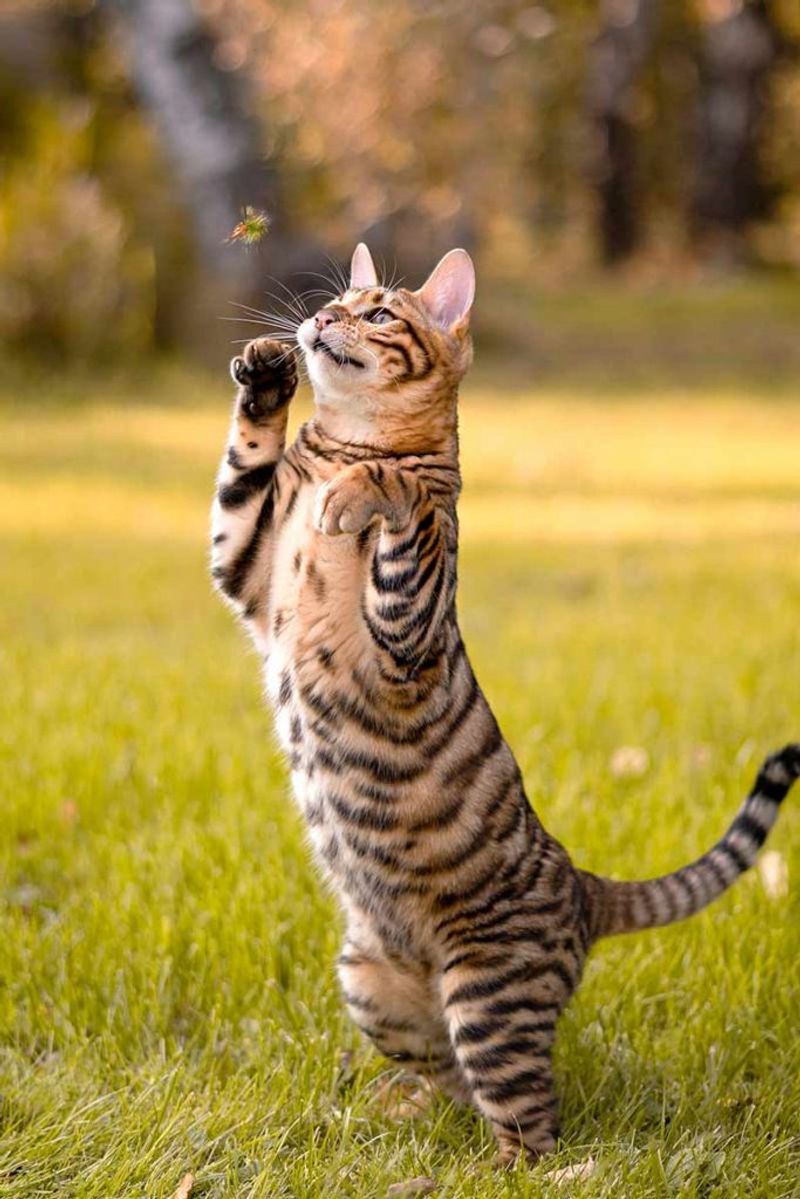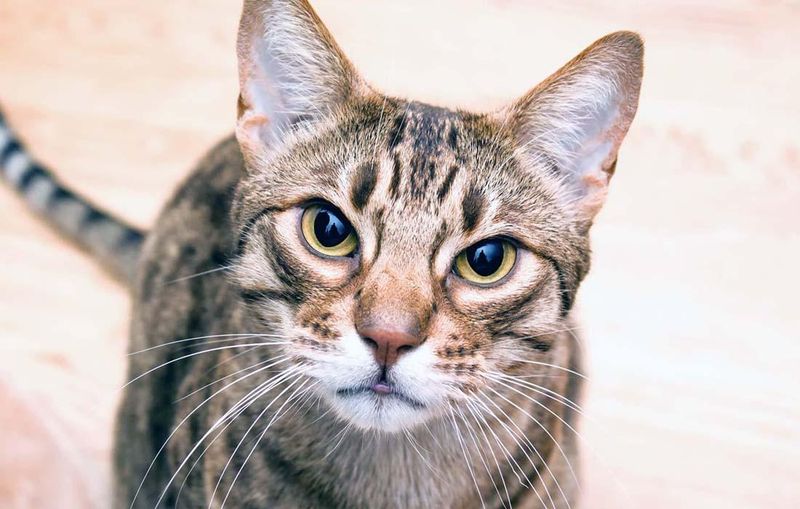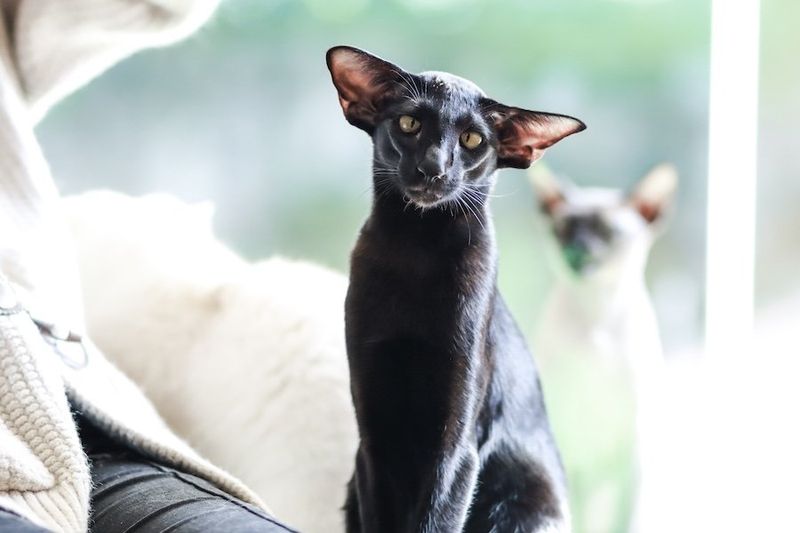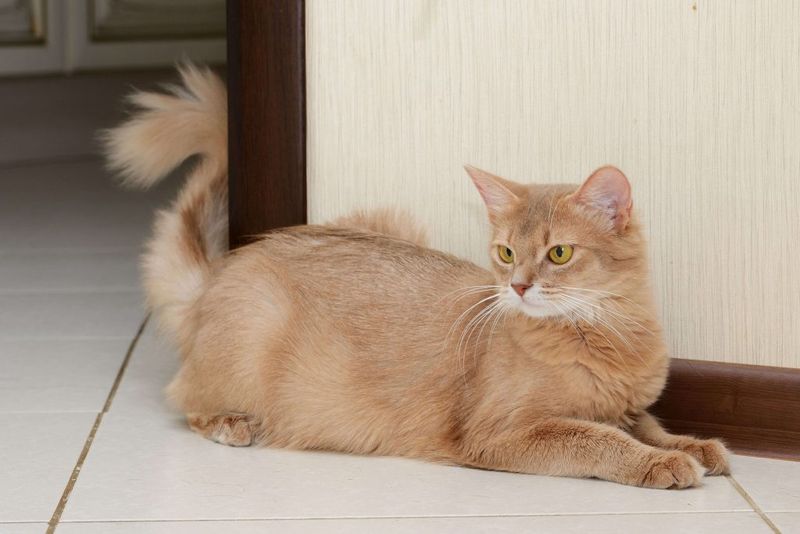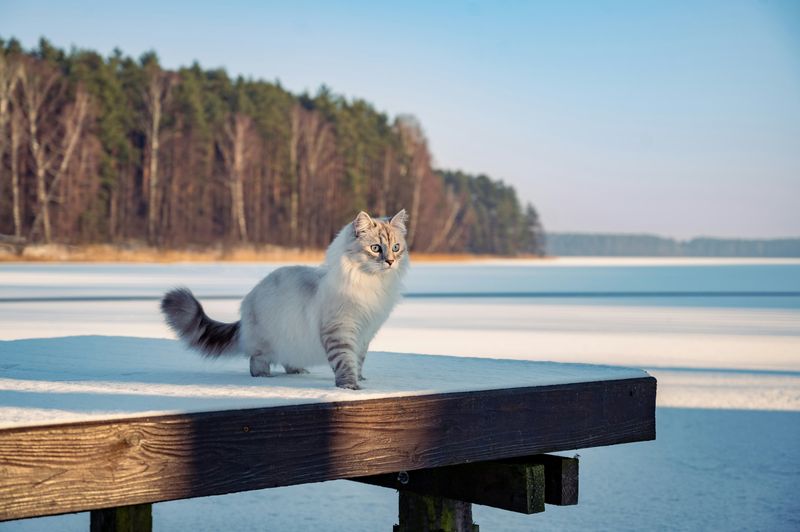📖 Table of Content:
Cats are known for their charm, independence, and affectionate moments. Many breeds adapt well to home life, offering calm companionship and playful energy. However, not every feline is suited for life indoors.
Certain cat breeds retain strong wild instincts, high prey drives, or unpredictable temperaments. These traits can make them difficult to manage in a typical household setting. Without proper space, stimulation, or handling, their behavior may become overwhelming.
While their beauty and exotic looks may be tempting, some breeds require more than most homes can provide. Understanding a cat’s natural temperament is key before bringing one into a domestic environment. Choosing the right companion means balancing admiration with realistic care expectations.
1. Savannah Cat
Born from crossing domestic cats with African servals, Savannah cats are basically leopards in disguise. These athletic felines can jump up to 8 feet high from a standing position, turning your bookshelf into their personal playground.
Savannahs are extremely intelligent and need constant mental stimulation. Without proper enrichment, they’ll redesign your home interior – starting with your curtains. Their loud, distinctive calls might make neighbors think you’re housing exotic wildlife. First-generation Savannahs (F1s) are actually illegal in many states because they’re considered wild animals. These cats need experienced owners with plenty of space and patience.
2. Bengal Cat
Bengals look like they just walked out of the jungle, sporting gorgeous spotted or marbled coats that resemble their wild Asian leopard cat ancestors. Their high energy level is legendary among cat owners who’ve witnessed their 3 AM sprinting competitions. Water fascination sets Bengals apart from typical house cats.
They’ll join you in the shower, play in sinks, and might even learn to turn on faucets themselves. Your water bill will never be the same. Vocally opinionated, Bengals will chat with you all day long. They require daily exercise and mental challenges to prevent boredom-induced chaos. Without proper stimulation, your furniture becomes their climbing gym.
3. Chausie
With wild roots and a sleek, muscular build, Chausies are natural athletes that turn furniture into playgrounds. Standing close to 18 inches tall, they outsize most domestic cats and thrive in environments with vertical territory. Their sharp hunting drive means smaller animals in the home may not be safe.
Chausies often retrieve toys and can even learn to walk on leashes, blurring the line between cat and dog. These cats demand interactive play sessions multiple times daily. Their intelligence means they’ll solve puzzles quickly, including how to open doors and cabinets. First-time cat owners should probably look elsewhere unless they’re prepared for a feline that’s part-time acrobat.
4. Serengeti
They may not be true wildcats, but Serengetis sure think they are. These spotted dynamos, bred from Bengals and Oriental Shorthairs, come with legs like a cheetah and the zoomies to match. Expect midnight sprints and non-stop antics unless you keep them entertained—daily play sessions are a must!
They’re known for their remarkable jumping abilities and can easily reach the top of refrigerators, cabinets, or doors. Highly social and vocal, these cats form strong bonds with their humans and demand attention. They don’t do well with long periods alone and may develop separation anxiety. Their intelligence means they’ll quickly learn to open drawers, doors, and anything else that might contain interesting items.
5. Pixie-Bob
Despite rumors of bobcat ancestry, Pixie-Bobs are domestic cats with wild looks and personalities to match. These substantial felines can weigh up to 18 pounds and have distinctive bobbed tails, tufted ears, and lynx-like facial features. Known for dog-like behaviors, Pixie-Bobs often follow owners around, play fetch, and can even learn to walk on leashes.
Their high intelligence means they need regular mental stimulation through puzzles and games. Pixie-Bobs are known climbers who appreciate vertical territory. Without proper cat trees and shelving, they’ll find their own elevated spots – like your kitchen cabinets or curtain rods. Their muscular build means they can easily knock items off shelves during their explorations.
6. Abyssinian
Abyssinians might look relatively normal, but their energy levels are anything but ordinary. These cats are in perpetual motion, exploring every inch of your home with remarkable agility and curiosity. Their ticked coats give them a wild appearance reminiscent of African wildcats.
Extremely intelligent, Abyssinians quickly learn how household items work – including door handles, light switches, and faucets. They’re notorious for stealing small objects that catch their interest, creating mysterious disappearances around your home. Abys need daily interactive play sessions to burn energy. Without proper stimulation, they’ll create their own entertainment, often involving your belongings. These cats form strong bonds with their people but don’t typically enjoy being held, preferring to be in constant motion.
7. Egyptian Mau
Think of Egyptian Maus as the cheetahs of your home—they’re fast, sleek, and always ready to chase. Clocking speeds up to 30 mph, these spotted speedsters aren’t just pretty faces. Their instincts run deep, and they’ll happily hunt anything from a toy mouse to your unsuspecting toes wiggling under a blanket.
Their exceptional jumping ability means no shelf or countertop is safe from exploration. Sensitive to their environments, Egyptian Maus can be startled by sudden noises or changes. They form deep bonds with their chosen people but may be reserved around strangers. These cats need regular interactive play sessions to channel their hunting instincts in appropriate ways.
8. Toyger
With their tiger-like stripes and muscular build, Toygers look like tiny jungle cats—but don’t worry, they’re all housecat at heart. Energetic, fun-loving, and super smart, these felines can learn tricks, play games, and happily strut on a leash like little furry show-offs.
They require mental stimulation through puzzles, games, and interactive toys to prevent boredom-induced mischief. Toygers are excellent jumpers and climbers who appreciate vertical territory. Without proper cat furniture, they’ll use your shelves, curtains, and furniture as their personal jungle gym. Their athletic builds and determination mean they can access places you thought were unreachable.
9. Ocicat
Combining the exotic look of a wild feline with the charm of a domestic pet, Ocicats are truly unique. Their spotted coats give them a jungle-cat appeal, while their lively, social personalities ensure they’re never far from your side—especially if they think you’re not paying enough attention.
They excel at opening cabinets, drawers, and doors in their quest to explore every inch of your home. Their high energy levels require daily play sessions with interactive toys. Ocicats can learn tricks, play fetch, and even walk on leashes. Without proper stimulation, they’ll create their own entertainment – often involving your possessions in ways you never imagined.
10. Oriental Shorthair
Oriental Shorthairs might not have wild ancestry, but their energy levels and vocal abilities certainly qualify them for this list. These sleek, athletic cats are in constant motion, exploring every surface in your home with remarkable agility. Famous for their voices, Orientals will hold lengthy conversations with you whether you want to participate or not.
Their opinions are numerous, and they’re not shy about sharing them at all hours. These cats form intense bonds with their people and demand attention. Orientals are incredibly intelligent and need mental stimulation to prevent destructive behaviors. They excel at learning tricks and solving puzzles. Their slender bodies can squeeze into surprisingly small spaces during their explorations, so nothing in your home is truly off-limits.
11. Somali
Think of Somalis as Abyssinians in disguise—long-haired, with extravagant tails and energy to spare. Their wild-looking coats match their adventurous spirit, and nothing escapes their attention. If it moves (or even if it doesn’t), a Somali is probably already on the case.
Their problem-solving abilities mean childproof locks are merely interesting puzzles to solve. These cats are notorious for learning how to turn doorknobs and open cabinets. Somalis need daily interactive play to burn energy. They’re excellent jumpers and climbers who appreciate vertical territory. Their playful antics continue well into adulthood – these cats never truly grow up. Without proper stimulation, they’ll invent games that may involve your belongings in creative ways.
12. Siberian
Though Siberians may appear soft and cuddly, they are powerful, agile cats bred for survival in Russia’s dense forests. Weighing up to 20 pounds, they combine strength and grace with an enduring prey drive that reflects their heritage as natural hunters.
They’ll stalk, pounce, and “kill” toys with enthusiasm that can be startling to witness. Their thick triple coats require regular grooming to prevent mats and reduce shedding throughout your home. Siberians are problem-solvers who quickly learn how household items work. They’re fascinated by water and may join you in the shower or play in sinks. Their playful personalities persist throughout their lives – these cats never fully outgrow their kitten-like enthusiasm.
